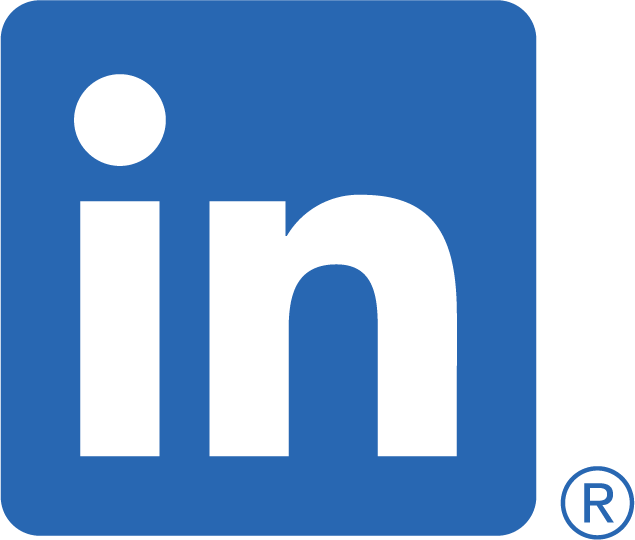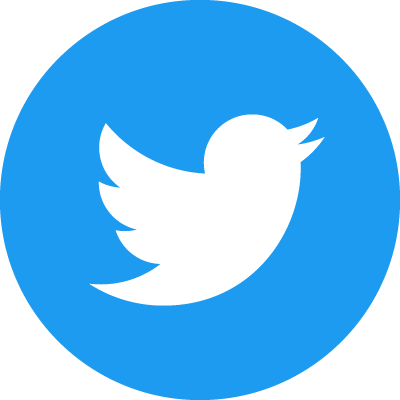Your resume is a document that shows your work experience, qualifications, accomplishments, areas of expertise, and personal details to potential employers. However, there’s more to writing a resume than simply dumping your professional history onto the page. Writing a resume that gets you invited to an interview requires you to dig deeper.
The strongest resumes are simple and concise, free of complex formatting and graphics. Your resume should be tailored for each individual position you're applying for, and it should show recruiters, hiring managers, and the automated applicant tracking system (ATS) that you’re the right candidate for the job.
In this article, we’ll take an in-depth look at resumes and how to write one in 2023.
Let’s jump right in.
What is a resume?
A resume is a professional document that lists your professional and personal details, notable accomplishments, and skills for recruiters to see. It allows your four audiences (screener, recruiter, future boss, and ATS) to judge whether you’re the best fit for an open position.
On average, a recruiter will spend 7.4 seconds reading your resume before deciding whether to move on to the next one or advance your resume to the next step in the hiring process. That isn’t much time to make an impression.
To stand out, you need a resume that shows off your top achievements, or “high scores,” throughout your professional career. Such a resume shows intent and tells recruiters exactly what they want to know.
The goal of a successful resume is to communicate your skills while transmitting the desires and goals you have in order to reach the “next level” of your professional career.
10 tips for writing a resume in 2023
If you want to advance your career or change employers, you need to maximize every aspect of your resume.
Here are 10 tips for crafting a resume that will get you noticed and help you land an interview.
1. Keep it short
If you’re relatively new to the workforce and have been in your career for less than 10 years, you want a one-page resume.
If you’ve been in your career for more than 10 years, a two-page resume is fine, but keep in mind that your resume has only a few seconds to make an impression. Candidates with extensive careers can still benefit from keeping their resumes to one, strongly crafted page.
Keep words and phrases short and brief, utilizing success verbs in place of action verbs to avoid overused and unpersuasive words. For example, instead of using the verb “managed” try “orchestrated” or “improved.”
2. Keep it simple
It can be tempting to pull out all the stops when crafting a resume that reflects you as a person. Many job seekers indulge in complex formatting and throw in headshots, charts, graphics, and other images in an attempt to stand out. This can be especially tempting for creative professionals who feel that a traditional resume is too dull.
Even if you’re an artist, your resume is one thing in life where boring is better. Don’t send your audiences on a hunt through sidebars and footers for basic information like your name or email address.
Images and other graphics can confuse the ATS, meaning it may miss the job-specific keywords that will help it correctly file your resume. If your keywords aren’t in a text format, your resume might not get where it needs to be.
Likewise, never submit your resume as a PDF or other image-based format. Use only text-based formats like Microsoft Word or Google Docs to ensure your resume is readable by all eyes — whether they’re human or machine.
3. Be sure to include your contact information
One of the easiest mistakes to make when writing your resume is to leave off your contact information. Include your name, phone number, street address, and email address at the top of your resume.
Dispensing this information early in your resume, at the top of the first page, makes it easy to find and tells the parser or anyone reading your resume that they are, in fact, reading a resume and starting in the right place.
Provide your address and include the city, state, and postal code so it will be easy to search by location.
4. Don’t keyword-stuff your resume
It’s important to include relevant keywords for the job you’re applying for, as this tells the ATS where to forward your resume. However, resist the temptation to overfill your resume with keywords, especially irrelevant ones, or use tricks to hide keywords where only the ATS can see them.
A resume overstuffed with keywords may game the ATS, but the first human who reads it will see through your trickery. If they see you’re trying to inflate your qualifications, that’s a good way to get blacklisted from that organization.
And if you fill your resume with popular but irrelevant keywords, your resume will likely end up on the other side of the planet (maybe metaphorically, maybe literally) from the person you want reading it.
Your resume should read naturally for your human audiences. Don’t lose credibility by making an obvious play for more attention, and don’t secretly include keywords for the ATS by writing them in white, size 1 font. These unprofessional methods will get your resume deleted from the recruiter’s system.
5. Instead of an objective, write a professional summary
Your professional summary is the most important section of your resume. It’s the most effective section for telling recruiters who you are, what you want to do, and what you can do for your next employer.
This is where you pitch yourself as a professional and convey what you want your next role to be.
Your professional summary starts with a professional headline, which is three or four words that perfectly capture your career so far. This should be in bold and ALL CAPS above the rest of the summary.
The first line is used to communicate your expectations. Here you will list 3 to 5 job titles that you’d like to be your next assignment. To clarify, these are not job titles you have had in the past, but roles you want in the future. This list will give recruiters a solid idea of the roles you believe you’re a good fit for.
The second line is a list of your qualities and abilities as a professional. These are abilities you currently have that will help you achieve the “next level” of your career.
The third line lists 3 to 5 of the most important achievements in your recent career. Share the achievements that earned recognition and demonstrate a firm professional grasp of your previous or current role.
The optional fourth line of your professional summary gives you an opportunity to list your biggest achievements in general terms. Don’t worry about listing numbers or going into detail here, as you’ll do that in a later section.
Here, use three to five phrases to show the biggest ways you’ve contributed to your employers. These can be things like “increased productivity,” “reduced overhead,” and “led business growth.”
While this last line is optional, it can help show that you’re a well-rounded professional with additional qualities.
6. List your current or most recent job first
When crafting the work history section of your resume, always list your jobs in reverse chronological order. Your most recent position is the most relevant position.
List the company name and your tenure there as the headline of each work history block. Follow this with bullet points that show recruiters and hiring managers what your proficiencies are and how your major achievements benefited previous employers.
This style lets you make the entire section more concise and effective at conveying valuable information about you.
7. Use 10-15 bullet points for a 1-page resume, and 25 bullet points for a 2-page resume
An effective resume has a limited number of bullet points for each job. However, not all jobs are the same, and the ones more relevant to the job you’re applying for should be given more space on your resume.
Each bullet point in your resume is a precious resource. Use them wisely.
Leave any job older than 15 years off your resume. It’s not important to list every single position you’ve ever had. Even if you had an impressive job earlier in your career, if it’s more than 15 years in the past, its relevance today is minimal, as it doesn’t say much about your current abilities. Also, that odd job you did back in high school can be omitted.
A resume is prime real estate and only your best and most recent experiences should be included.
8. Write bullet points that show, don’t tell
While it can be tempting to simply list a bunch of achievements that make you look good, what the recruiter and your future employer want to see is context. How did those achievements benefit the company, and can those accomplishments be quantified? They want to see what you did for your past employer because it shows what you may be able to do for them.
Demonstrate your accomplishments with success verbs and numerical values to help recruiters visualize your victories in detail.
Powerful success verbs (here’s a list of 25) show how your accomplishments benefited the company without being boring or nonspecific.
Numerical values quantify your successes and show the extent to which these accomplishments benefited your employer. For example, add numerical value to statements like “produced 50 best-selling novels” or “improved profit by 75%.” This detailed information helps future employers understand the importance of your accomplishments.
9. Double check past titles, employment dates, and company names
Your past job titles and employment dates are facts you can’t afford to mess up. They give an accurate description of your professional history. If there are inconsistencies, they will likely be noticed. At best, this will reflect poorly on your attention to detail — and at worst they will disqualify you from the position.
Be honest, precise, and factual with every detail. Do not exaggerate or inflate your professional or educational successes. Dishonesty can harm rather than benefit your chances of recruitment.
The company names you list should be exactly what your audience would find if they searched for it in Google. Some companies change their names, or there may be two companies with similar names. No matter what the company was called when you worked there, or what you called it colloquially around the water cooler, use the current official name for the company.
If you worked for Facebook 10 years ago, list it as Meta. If you worked for the massive chain of retail stores founded by Sam Walton, call it Walmart, not Wal-Mart or Wally World.
10. Optimize for resume parsers
When writing your resume, keep in mind what your audiences want. This includes resume parsers, which are programs that process the natural language in your resume, organize it, and store it for quick viewing and analysis by recruiters.
Make sure your resume is optimized for resume parsers by giving it simple formatting, clean and clearly defined sections, and crafting it how most parsers prefer.
This includes:
- Placing your name and contact information at the top.
- Avoiding headers and footers.
- Using one standard, common font throughout. (Don’t use a font the recruiter may not have installed on their computer.)
- Not using tables or columns.
- Never using graphics, visual bars, WordArt, a headshot, or other images.
- Avoiding nontraditional spacing. (Don’t add a space between each letter of your name to give it a certain aesthetic, as the ATS won’t be able to read it.)
- Submitting your resume as a Word Document, Google Doc, or other text-based format. (Never submit it as a PDF, scan, or other image-based file format.)
Your resume needs to be easy for a computer and a human to understand. Programs can’t translate pictures, graphs, and other graphics and may not be able to process your resume at all if you include them. If your career is in graphic design or another related field, consider providing a reference to an additional resume that includes graphics and unique designs.
Avoid using company logos or other important information in graphic form as a parser will not be able to identify the information.
Conclusion
Every professional can relate to the anxiety over crafting the perfect resume. Even the most articulate and well-rounded person struggles to produce the best resume for the next step of their career.
Following an outline can help simplify the process, guiding you through the format, syntax, language, and overall goal you want to accomplish. We can also write one for you for free.
...







